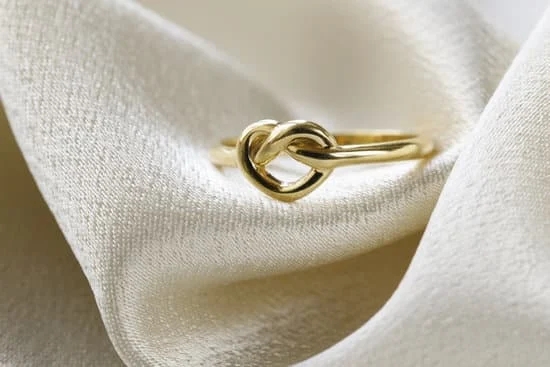The museum history of wire wrapped jewelry is a fascinating exploration of the art form’s origins, evolution, and cultural significance. Dating back centuries, this intricate and delicate craft has mesmerized jewelry enthusiasts and historians alike. From its early beginnings to its influence on modern fashion, the preservation and collection of wire wrapped jewelry in museums have played a crucial role in highlighting its enduring legacy.
Wire wrapped jewelry involves the intricate technique of wrapping wire around stones, beads, or other materials to create stunning pieces of wearable art. This ancient form of jewelry making has a rich history that spans across various cultures and time periods. The use of different metals, gemstones, and techniques makes wire wrapped jewelry a versatile and timeless art form.
As we delve into the origins and evolution of wire wrapped jewelry, we gain insight into the cultural significance behind each unique piece. Notable artists and designers have contributed to this art form’s development, leaving behind a legacy that continues to inspire contemporary artisans.
With its deep-rooted history and continued influence in modern fashion, it comes as no surprise that museums around the world have curated extensive collections dedicated to preserving the beauty and craftsmanship of wire wrapped jewelry.
The Origins of Wire Wrapped Jewelry
Early Beginnings
The history of wire wrapped jewelry can be traced back to ancient civilizations, where people used simple tools and techniques to create intricate designs. The earliest evidence of wire wrapped jewelry dates back to the Bronze Age, with examples found in various archaeological sites around the world. These early pieces were often made from copper or bronze wires and showcased the skill and craftsmanship of the artisans who created them.
Historical Significance
Wire wrapped jewelry has a rich historical significance, with different cultures incorporating the artform into their traditions and customs. In ancient Egypt, for example, wire wrapped jewelry was worn as a symbol of status and wealth, with elaborate designs crafted for royalty and nobility. In ancient Greece, wire wrapping was used to create intricate patterns and motifs that held symbolic meanings within their society.
Global Influence
As trade routes expanded and cultural exchanges took place, the art of wire wrapping spread across different regions of the world. From Asia to Europe to Africa, each culture added its own unique twist to this artform, resulting in a diverse range of styles and techniques. The global influence of wire wrapped jewelry demonstrates its enduring appeal and relevance throughout history.
Overall, the origins of wire wrapped jewelry have deep roots in various cultural traditions and artistic expressions, making it an important aspect of museum history. As museums continue to preserve and showcase these exquisite pieces, they provide invaluable insights into the evolution of this artform over time.
Evolution of Techniques in Wire Wrapping
Wire wrapping is a jewelry-making technique that involves bending and wrapping wire around stones, beads, or other components to create intricate and beautiful designs. Over the years, the techniques used in wire wrapping have evolved, leading to the development of various styles and approaches in creating wire wrapped jewelry.
The evolution of techniques in wire wrapping can be traced back to ancient civilizations such as the Egyptians, who are believed to have been among the first to practice this art form. As time went on, different cultures and regions developed their own unique methods of wire wrapping, incorporating local materials and design aesthetics into their jewelry.
Today, modern wire wrapping techniques continue to evolve as artists and designers experiment with new tools, materials, and approaches. From traditional hand tools to electric or hydraulic powered machinery, the methods for shaping and manipulating wires have diversified, allowing for greater intricacy and precision in creating wire wrapped jewelry.
The use of technology has also had a significant impact on the evolution of wire wrapping techniques. With the advent of computer-aided design (CAD) software and 3D printing technology, jewelry makers are able to conceptualize and produce complex wire wrapped designs with greater ease and efficiency than ever before. This marriage of traditional craftsmanship with modern technology has opened up new possibilities for creativity within the realm of wire wrapped jewelry.
- Traditional hand tools
- Electric or hydraulic powered machinery
- Computer-aided design (CAD) software
- 3D printing technology
Notable Artists and Designers in Wire Wrapped Jewelry
Early Pioneers
In the museum history of wire wrapped jewelry, there are several notable artists and designers who have made significant contributions to the art form. One of the early pioneers of wire wrapping is Preston Reuther, who popularized the technique in the 1960s. His intricate designs and innovative use of metals set the stage for the modern wire wrapping movement. Another pioneering artist is Corwin Lewis, whose work expanded the possibilities of wire wrapping by incorporating gemstones and unconventional materials.
Contemporary Masters
In more recent years, a new generation of artists and designers have emerged as masters of wire wrapped jewelry. Justin Scott, known for his organic and nature-inspired designs, has gained recognition for his unique approach to wire wrapping. Another contemporary master is Nicole Hanna, whose delicate and intricate pieces have captivated collectors and enthusiasts alike. These artists continue to push the boundaries of traditional wire wrapping techniques, bringing innovation and creativity to the art form.
Influence on Jewelry Design
The influence of notable artists and designers in wire wrapped jewelry extends beyond their individual creations. Their work has inspired a new wave of jewelry designers to explore the possibilities of wire wrapping, leading to a resurgence of interest in this ancient craft. The intricate patterns, unconventional materials, and artistic vision displayed in their work have left a lasting impact on contemporary jewelry design, solidifying their place in museum history.
Cultural Significance of Wire Wrapped Jewelry
Wire wrapped jewelry has a rich cultural significance that dates back centuries. Throughout history, different cultures have utilized wire wrapping techniques to create jewelry that not only served as adornment but also held symbolic and spiritual meanings. From ancient civilizations to modern-day societies, wire wrapped jewelry has played an important role in the expression of cultural identity and traditions.
The cultural significance of wire wrapped jewelry can be seen in the materials used, the designs, and the purposes for which they were created. In many indigenous cultures, intricate wire wrapped jewelry was crafted using natural elements such as gemstones, shells, and pearls, symbolizing the connection to the earth and the spiritual beliefs of the community.
The patterns and motifs found in wire wrapped jewelry often reflect specific cultural symbols and stories, serving as a way to pass down traditions from generation to generation.
In museums around the world, collections of wire wrapped jewelry showcase the diverse cultural significance of this art form. These pieces offer a glimpse into the beliefs, values, and customs of different societies throughout history.
By examining these artifacts, visitors can gain a deeper understanding of how wire wrapped jewelry has been integral to various cultural practices and ceremonies. Furthermore, these museum collections also provide valuable insights into the evolution of techniques used in creating wire wrapped jewelry across different time periods and geographical locations.
- The use of natural materials in wire wrapping
- Symbolic meanings behind wire wrapped designs
- Connection between wire wrapped jewelry and cultural traditions
Influence of Wire Wrapped Jewelry in Modern Fashion
Wire wrapped jewelry has had a significant influence on modern fashion, with its unique and intricate designs captivating the attention of fashion enthusiasts and designers alike. The history and artistry of wire wrapped jewelry have inspired contemporary fashion trends, as well as the work of renowned fashion houses. This section will explore the impact of wire wrapped jewelry on modern fashion, highlighting its enduring legacy in the industry.
In recent years, there has been a resurgence of interest in handcrafted and artisanal jewelry, including wire wrapped pieces. Influential designers and celebrities have been spotted wearing wire wrapped jewelry, elevating its status as a fashionable and versatile accessory. The organic and personalized aesthetic of wire wrapping has resonated with individuals seeking to express their individuality through their style choices.
Designers have also incorporated elements of wire wrapping into their collections, from delicate earrings to statement necklaces. The use of wires in unconventional ways has brought a fresh perspective to modern fashion, adding an artisanal touch to contemporary designs. As a result, wire wrapped jewelry has become synonymous with creativity and craftsmanship in the world of fashion.
Moreover, the cultural significance and storytelling aspect of wire wrapped jewelry have made it a popular choice for those looking to infuse meaning into their accessories. Whether it’s by incorporating stones with symbolic meanings or by showcasing intricate patterns that reflect cultural heritage, wire wrapped jewelry has become a means for individuals to connect with their roots while making a stylish statement.
As museums continue to play a crucial role in preserving the history of art and design, they have also recognized the importance of documenting and showcasing the significance of wire wrapped jewelry in modern fashion. Through educational programs and exhibitions, museums are shedding light on the craftsmanship and innovation behind wire wrapping techniques, further solidifying its place in the annals of fashion history.
Preservation and Collection of Wire Wrapped Jewelry in Museums
Wire wrapped jewelry has a rich history and cultural significance, making it a sought-after item for museum collections. Museums around the world have recognized the importance of preserving and collecting wire wrapped jewelry as part of their cultural heritage. The preservation and collection of these unique pieces in museums not only serve to showcase the artistry and craftsmanship of the jewelry, but also to educate and inspire future generations.
Since its origins, wire wrapped jewelry has evolved in techniques and designs, reflecting the various cultures and traditions where it originated. Museums play a crucial role in safeguarding these diverse forms of wire wrapped jewelry, ensuring that they are protected for future generations to appreciate. Through their collections, museums provide a platform for the public to gain insight into the evolution of wire wrapping techniques, as well as the cultural significance attributed to these timeless pieces.
Notable artists and designers in wire wrapped jewelry have significantly contributed to the development of this art form. Their creations have become iconic representations of the beauty and complexity found in wire wrapped jewelry. Museums recognize the artistic value of these masterpieces and prioritize their preservation within their collections. By doing so, museums are able to celebrate and honor the talent and creativity that has shaped wire wrapped jewelry throughout history.
Examination of Wire Wrapped Jewelry in Museum Collections
Wire wrapped jewelry has a rich and intriguing history, and its presence in museum collections provides an invaluable opportunity for examination and study. Museums around the world hold a significant amount of wire wrapped jewelry, ranging from ancient artifacts to more contemporary pieces. This diverse range of artifacts allows for a comprehensive exploration of the evolution and cultural significance of this art form.
One aspect of examining wire wrapped jewelry in museum collections involves analyzing the materials and techniques used in creating these pieces. From the simple wire twisting methods used by ancient civilizations to the intricate designs made possible by modern tools, the evolution of wire wrapping techniques can be traced through these museum collections. By closely studying these artifacts, experts are able to gain insights into the craftsmanship and innovation that has shaped this art form over time.
Furthermore, the examination of wire wrapped jewelry in museum collections allows for a deeper understanding of its cultural significance. These pieces often reflect the beliefs, customs, and traditions of the cultures that created them.
Whether it’s an ancient amulet or a piece of ceremonial jewelry, each artifact provides valuable clues about the social and spiritual importance placed on adornment throughout history. This examination also sheds light on how wire wrapped jewelry has been used as a means of self-expression and identity within various cultures.
In addition to providing insight into the past, museum collections of wire wrapped jewelry also serve as a source of inspiration for modern designers and fashion enthusiasts. The unique designs, materials, and techniques showcased in these collections have influenced contemporary jewelry making and continue to shape modern fashion trends. By closely examining these pieces, researchers are able to draw connections between past and present styles, further highlighting the enduring legacy of wire wrapped jewelry in museum history.
Educational Programs and Exhibitions on Wire Wrapped Jewelry in Museums
Museums play a crucial role in educating the public about the history and cultural significance of wire wrapped jewelry. Many museums around the world offer educational programs and exhibitions focused on this unique form of jewelry making. These programs aim to promote an understanding of the techniques, cultural traditions, and artistic value associated with wire wrapped jewelry.
In addition to traditional exhibitions, many museums also offer educational programming such as workshops, lectures, and demonstrations. These activities provide visitors with the opportunity to learn about wire wrapping techniques firsthand, as well as gain insight into the materials and designs used in creating wire wrapped jewelry. By offering these educational programs, museums help preserve the art form and ensure that future generations have the opportunity to appreciate wire wrapped jewelry.
Furthermore, museum exhibitions dedicated to wire wrapped jewelry often feature pieces from their own collections as well as loans from private collectors or other institutions. These curated displays showcase the historical and artistic development of wire wrapped jewelry, allowing visitors to explore its evolution over time. Additionally, many museums publish accompanying catalogs or materials that delve deeper into the history and significance of the pieces on view, further enhancing the educational experience for visitors.
| Educational Programs and Exhibitions | Museums |
|---|---|
| Workshops | National Museum of American History |
| Lectures | San Francisco Museum of Modern Art |
| Demonstrations | The Met Cloisters |
Conclusion
In conclusion, the history of wire wrapped jewelry has made a significant impact on the world of art and fashion. From its ancient origins to its evolution of techniques, notable artists and designers have contributed to its cultural significance. The influence of wire wrapped jewelry in modern fashion cannot be denied, as it continues to be a popular choice for those seeking unique and handmade pieces.
The preservation and collection of wire wrapped jewelry in museums play a crucial role in ensuring that this art form is not forgotten. Museums offer educational programs and exhibitions that provide valuable insight into the history and techniques used in creating these intricate pieces. Visitors have the opportunity to examine wire wrapped jewelry up close, gaining a deeper understanding and appreciation for this timeless art form.
As we look to the future, it is evident that wire wrapped jewelry will continue to have an enduring legacy in museum history. Its beauty, craftsmanship, and cultural significance will ensure that it remains a cherished part of artistic expression for generations to come. Museums will continue to play a vital role in preserving and showcasing the rich history of wire wrapped jewelry, allowing it to shine as a true work of art.
Frequently Asked Questions
What Is the History of Wire Wrapped Jewelry?
The history of wire wrapped jewelry dates back to ancient times when civilizations used wire to create decorative and functional jewelry pieces. The technique has evolved over the centuries, with different cultures incorporating their own styles and materials.
What Is the History of Wire Jewellery?
Wire jewelry has been around for thousands of years, with evidence of its existence in ancient Egyptian and Mesopotamian civilizations. Over time, the craft has developed and adapted to different cultural influences, resulting in a wide variety of techniques and designs.
What Is the History of Wire Craft?
Wire craft has a long history dating back to prehistoric times when humans first began using wire for tools and adornments. As metalworking techniques advanced, so did the art of wire crafting, leading to intricate and delicate creations found across various cultures and time periods.

Welcome to my jewelry blog! My name is Sarah and I am the owner of this blog.
I love making jewelry and sharing my creations with others.
So whether you’re someone who loves wearing jewelry yourself or simply enjoys learning about it, be sure to check out my blog for insightful posts on everything related to this exciting topic!





